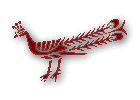 |
|
| ISSN 1084-7553 | |
| IJTS Vol. 2, No. 1 April 1996 |
|
| Editorial Note | |
| Tantra and Dharma... | |
| 1. Introduction | |
| 2. The Nature of... | |
| 3. Description of... | |
| 4. Additions to... | |
| 5. Traveling Kashmiri... | |
| 6. Conclusions... | |
| 7. Cultural Transfer... | |
| Computer Space | |
| New Titles | |
| - Serpentine... | |
| News | |
| Support The IJTS |
|
|
|
|
| Search |
|
| Register |
|
| Create Your Profile | |
| Recover Password | |
| Log In |
|
| Institutional Sub |
|
| none | |
The oldest manuscript of the Krtyakalpataru
| by Michael Witzel |
|
5. Traveling Kashmiri Brahmins The evidence collected in this paper presents a cluster of data, so far little noticed and even less discussed, all of which point in the same direction: apparently there were a number of Kashmiri Pandits, of both Dharma and Tantra persuasion (or both at the same time!) who traveled and worked in Northern India and in Nepal in the early centuries of this millennium. The Kashmiri Brahmins are well known for their wanderlust and their wide ranging travels all over India. 11 However, with reference to Nepal, there are a number of particularly interesting data. First there even are direct statements in MS colophons such as one referring to a "zaivaguru" that had come from Kashmir to Nepal. 12 Further, there are the many MSS of Kashmirian Shivaite Tantra texts in Nepal which, for decades, have been noticed and used by several Italian scholars such as G. Tucci and R. Gnoli, whom I met on one his trips to Nepal while I was working in the National Archives of Nepal in 1972. Another typical case is that of a rather early MS of the kubjikAmata tantra which was found in Nepal but which is written in early Sharada script. 13 The MS was in the possession of the former Darbar Library of Kathmandu (now National Archives). It was noticed there by Hara Prasad Shastri in 1898 and was subsequently taken from Kathmandu to Calcutta where it is now kept in the Library of the Asiatic Society, Calcutta (MS. no. G. 8329). [This is a preview of the full page; if you are a member of the Asiatica Association and have access to the IJTS, please login using the box on the left menu; non members: please become a member to support the Asiatica Association, and get full access to our publications.] |
|
©1995-2006 Asiatica Association. All Rights Reserved
site development L. Magnocavallo / site comments E. Garzilli |